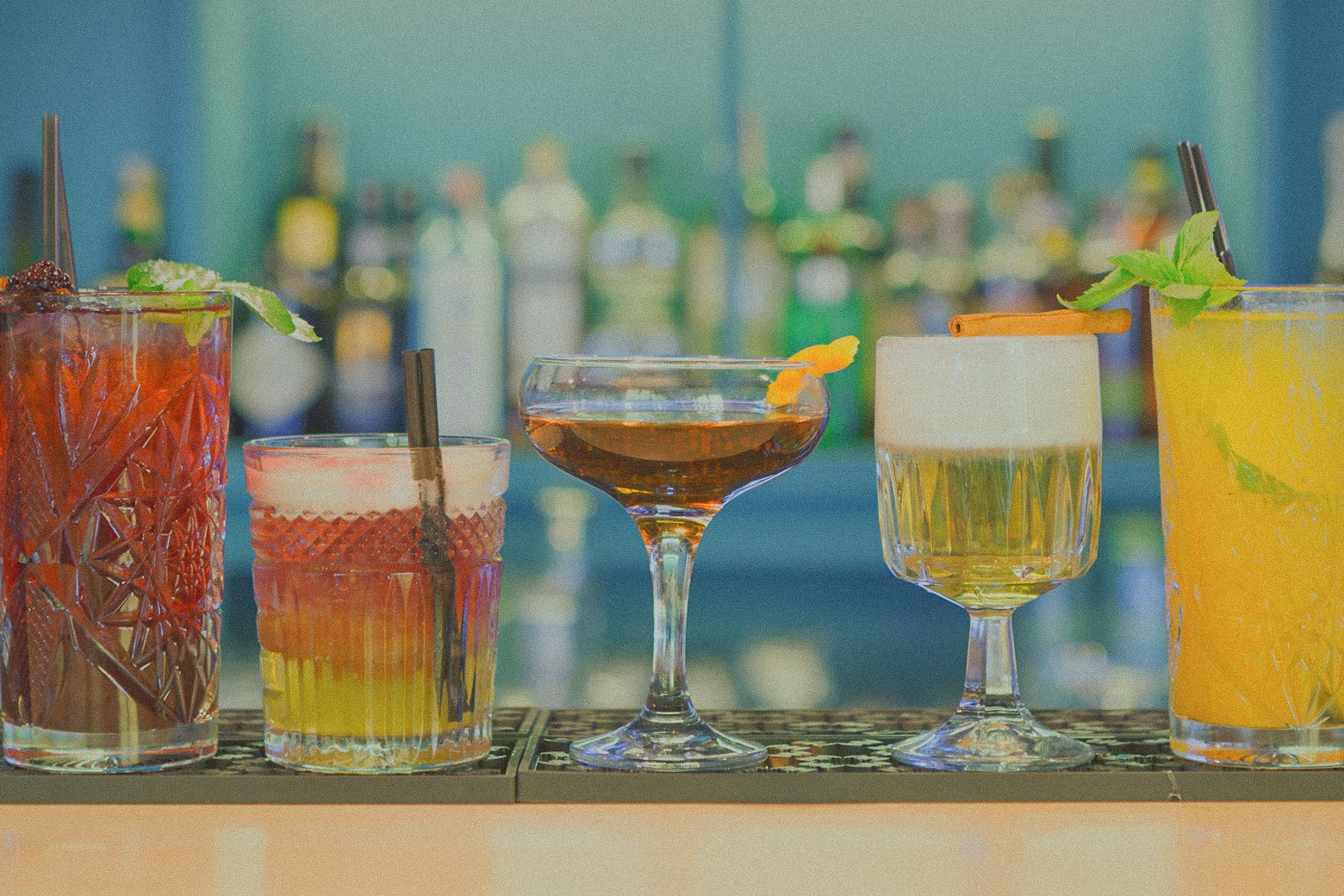Sign up for the Slatest to get the most insightful analysis, criticism, and advice out there, delivered to your inbox daily.
A few years ago, as nonalcoholic options slowly started to become trendy beyond Dry January, I sat at a bar with friends ahead of a birthday dinner. I wasn’t sober, but I wasn’t drinking while recovering from a concussion.
At the time, my friends and I were surprised by the cost of the nonalcoholic cocktails on the menu, which was about the same as that of many of the alcoholic beverages.
And our thoughts from 2022 are mirrored in today’s discourse. Criticism has risen on social media platforms like X around the pricing of nonalcoholic cocktails, and other news outlets have looked into the reasoning behind the high costs too.
What customers are paying for when they order a nonalcoholic cocktail is a combination of service, bartending skill, and high-quality ingredients. It takes the same amount of effort to make an NA cocktail as it does to make an alcoholic cocktail.
Jahdea Gildin, the sommelier at New York’s Luthun, works on NA sips with the restaurant’s executive chef and spoke to the process, which, he said, takes a lot of time, effort, and passion.
“This is not a mere afterthought,” Gildin said, likening the effort behind these drinks to what goes into preparing each dish and wine pairing. “Anything that excites and invites is worth our time and effort, and we hope our patrons feel the same. The prices of our offerings reflect the craft and expertise of our team as well as the value of the products that we work with.”
And the cost of a cocktail stems from more than just the effort of creation—ingredients cost a lot to make.
“NA spirits brands are mostly small or medium-sized businesses, so their margins aren’t as large as big brands,” added Hilary Sheinbaum, author of The Dry Challenge and founder of GoingDry.co. “That means that their cost to make products, bottle them, ship them, label them—all that jazz—is higher per unit.”
Some products, like alcohol-removed wines, also go through an extra step, she added.
Seth O’Malley, founding distiller of Wilderton Aperitivo Co., said it’s a common misconception that nonalcoholic substances that bear a likeness to their alcoholic counterparts are less expensive to make.
“Having worked on both sides of the alcohol divide, I can say my ingredient costs are way higher than when I was making alcoholic spirits, owing to the quality and volume of ingredients needed to make Wilderton,” said O’Malley. “I source the best botanicals I can find and use a lot of them to make Wilderton. Things like saffron and sandalwood have been luxury goods for centuries—and these are the sorts of ingredients we base our aperitivos on.”
Drinking is about more than getting tipsy. And if, while dining out in New York, we’re willing to pay nearly $20 for a drink, especially one that isn’t good for our health, then there’s little reason to feel apprehensive about paying a comparable amount for a similar yet theoretically healthier option.
O’Malley put it this way: “For me, cocktails—whether alc or nonalc—are about more than that. They’re an aesthetic experience, an encounter with nature (herbs, spices, fruits, grains), a social experience with friends, all made possible by producers and bartenders who made the drink possible.”
Alcohol really doesn’t need to be at the center to provide a valuable experience. At the end of the day, if you’re a fan of dining out, the addition of NA cocktails is something to celebrate, regardless of cost.
For me, a travel, food, and style writer and a lover of restaurants in general, dining out is a part of my regular routine. And that’s great—most of the time. But I’ve found that experiencing a restaurant often also includes imbibing, an activity that isn’t always at the top of my list for, say, a Monday or Tuesday night. Nonalcoholic cocktails allow me to fully experience the dining setting I’m in in the same way a regular cocktail would, without the tacky haze even one drink can leave the next day. These oft-colorful and unique sips allow me to experience new flavor combinations I might not have otherwise considered. After all, it’s a novel arena for bartenders to play in, which I imagine allows for added creativity.
With more options comes a heightened sense of inclusivity too. NA cocktail options on a menu allow the expansion of the diner’s experience, regardless of whether they’re sober, choosing not to drink, or aiming to drink less (as many more Americans are opting to do). Now anyone can have something other than a club soda to pair with a meal or to alternate with alcohol.
And beyond that, evenings with friends over sips are a communal experience I’d never want to miss out on merely because I’m not wanting to sling back an alcoholic beverage (or several). Nights filled with the melody of How are you, How’s your family, Did you hear, and I met someone, over the hum of fully booked, candlelit restaurants, have bred some of my favorite memories. Truthfully, those are how I’ve made it through some trying times.
But I want to be clear: It’s not the alcohol that I’ve found meaningful as part of those experiences.
“Let’s grab a drink” or “Let’s grab dinner” provides a venue for connection with friends and loved ones to happen. But we don’t need alcohol to continue that practice—the ritual of sharing a drink just helps provide a setting conducive to sharing and caring, regardless of ABV.


